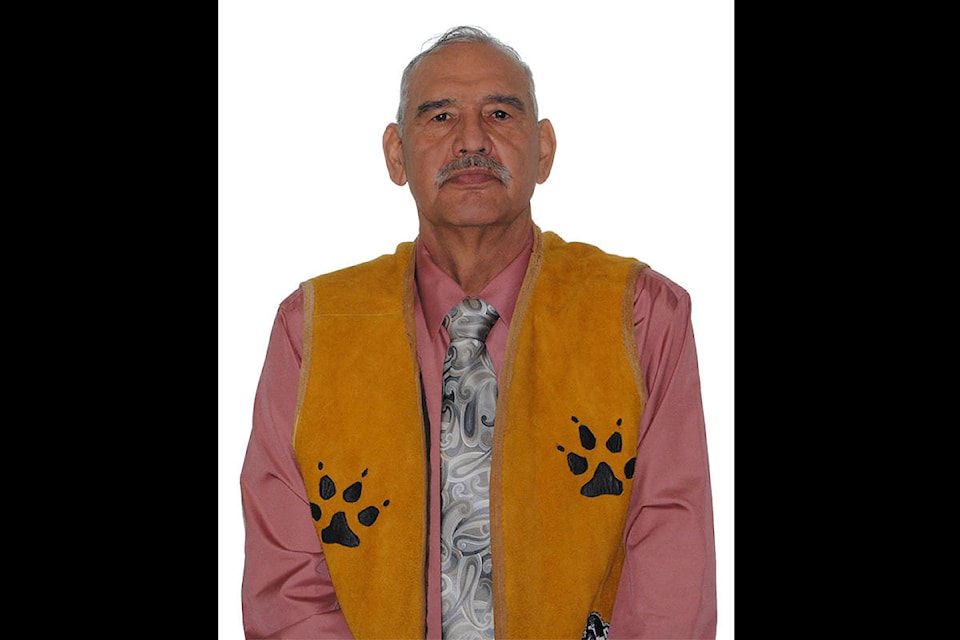A longtime Tahltan mining leader is set to be inducted into the Canadian Mining Hall of Fame early next year.
P. Jerry Asp said he was alerted about his successful nomination in a letter he received from Canadian Mining Hall of Fame chair John Baird on Sept. 10.
“This is a really, really big thing … it’s much-appreciated for sure,” Asp said in an interview Sept. 16. “I’ve been a long time in the mining industry, almost 60 years, so to receive this recognition is great.”
Asp is no stranger to awards and accolades — his other recognitions include the 2017 Indspire Award for business and commerce, the Prospectors and Developers Association of Canada’s 2011 Skookum Jim award, and the Queen Elizabeth II Diamond Jubilee Medal in 2013.
Reached for comment, Canadian Mining Hall of Fame media contact Morgan Murphy wrote in an email that 2020 inductees would be officially announced next month.
It appears, though, that Asp will be part of a small subsection within the Hall of Fame. According to Morgan, to date, only three Indigenous people have been inducted — Kate Carmack, Skookum Jim Mason and Dawson Charlie, whose inductions were all related to their contributions to the Klondike gold rush.
Asp has carved a more modern legacy.
Originally from Telegraph Creek, B.C., Asp has called Whitehorse home for the past 10 years. Over the decades, he’s done everything from working diamond drills to chairing an organization dedicated to assisting Indigenous communities with economic development, getting his start in the mining industry as a teen.
“Well, I was big and strong and by the time I was 16 years old, I got too smart to go to school,” he joked.
“So the opportunities were in mining — diamond drilling, underground, surface, both … I wasn’t even legally old enough to be underground, that’s why I did diamond drill.”
Among the places Asp worked during his youth was the Tantalus Butte coal mine in Carmacks, where he spent a total of seven years underground in the late ‘70s and again in the ‘80s. It was there, Asp said, that he served as president of the only all-Indigenous United Steelworkers local in North America, and also as the captain of the underground mine rescue team.
After awhile though, Asp said, he got tired of working outside at temperatures that could dip as low as -60C.
“So I went back (to school) and took business courses and I took project management, project development, and that’s what I went into… And that’s what I’ve been doing for 40 years,” he said.
Re-entering mining with a business approach, Asp helped co-found the Canadian Aboriginal Minerals Association, for which he was vice-president for more than 23 years, helped set up the British Columbia Aboriginal Mine Training Association and chaired the Yukon Mine Training Association.
As well, he co-founded the Global Indigenous Development Trust, of which he is currently CEO and chair of the board, and runs his own Whitehorse-based consultation company, Gray Wolf Solutions Inc.
Asp also served as chief of the Tahltan Band Council in the early 2000s, but was ousted in 2006 following a months-long protest by elders over development taking place on Tahltan territory.
What Asp still holds up as one of his biggest achievements, though, is creating the Tahltan Nation Development Corporation in 1985, for which he was CEO and president until 1993.
Asp said he started the corporation after seeing his First Nation struggle to find a contractor that would build 10 modern houses in Telegraph Creek.
“I said, ‘Why don’t we build them ourselves?’” he recalled.
The corporation and the opportunities it generated, Asp said, began to “turn things around” for the region, drastically helping to drop the unemployment rate — he previously told Canadian Mining and Energy that his reserve went from a 98-per-cent unemployment rate in the winter and 65 per cent in the summer to five per cent and zero per cent, respectively, by 2006.
A spokesperson for the Tahltan Central Government did not return a request for comment.
Asp said he also pushed for a higher education standard and supported the trades, and that, as a result, Tahltan people have seen an increase in high school graduates, a significant decrease in suicides, and a decrease in people dependent on welfare.
“Those are the kind of things I’m most happy about and because I gave our people opportunities and they saw how beneficial it is to get educated,” Asp said. “That was the big thing. I pushed education, I pushed the trades … So we’ve moved forward and that’s the biggest thing that I’m happy about, because I gave them opportunities and they took them.”
The Canadian Mining Hall of Fame’s 2020 induction ceremony is scheduled to take place in Toronto on Jan. 9.
Contact Jackie Hong at jackie.hong@yukon-news.com
